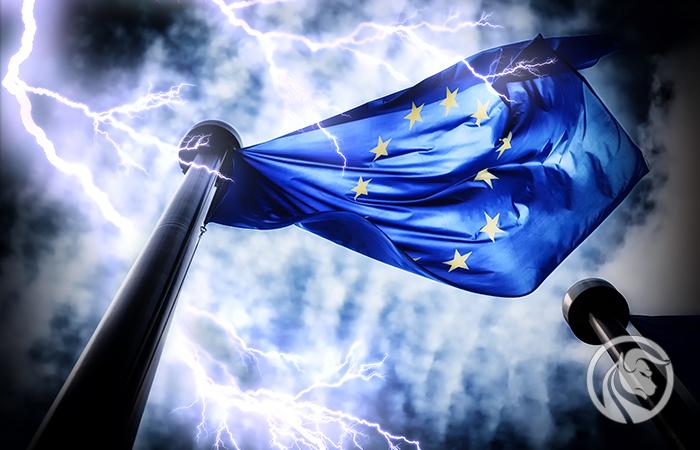What can the European Central Bank do in the current situation?
Even as the end of rising interest rates draws closer and stock markets tremble, European Central Bank may revise its plan to raise the eurozone's key interest rate by another 50 basis points at Thursday's meeting.
A little surprise, you might think - but what's next and how will the ECB communicate its future monetary policy to a financial market that has heated up after the first bank failures in the US and the problems of Credit Suisse? Here, investors will listen very carefully.
Pigeons vs Hawks
The current interest rate debate is heated both within the ECB and among eurozone member states. It is about the direction of further actions in the field of interest rate increases.
Recent statements by individual members of the Council indicate, however, that these discussions are gaining momentum again. While chief economist Philip Lane and others advocate a more cautious approach, i.e. a slowdown in the pace of hikes and a not too distant pause or end to the current cycle, the other camp, led by Isabel Schnabel, is in favor of further decisive tightening.
If the hawks are at the helm and the economic data remains solid and inflation remains high, there is a high risk that the ECB will actually go ahead with a 50bps rate hike. In such a scenario, the ECB would raise interest rates to new all-time highs, increasing the risk of making a mistake in monetary policy. The dormant attitude of the ECB at the beginning of the inflationary spiral could then cost it a lot by repeatedly misjudging the situation and exaggerating it to the limit. If the doves as more moderate supporters of monetary policy prevail, the ECB is likely to end the cycle soon and hold off on observing the delayed effects of interest rate hikes until they take full effect.
In general, however, it should be noted that the ECB wants to be as flexible as possible in the future. Christine Lagarde therefore, it will not be able to make a similar statement as during the last press conference, when the head of the ECB announced in advance the decision regarding the next interest rate meeting. Fine-tuning market expectations at the press conference has all too often failed. Therefore, it may turn out that this Thursday the ECB will choose a very defensive communication strategy and only communicate what is necessary.
The first victims of rising interest rates in the US
The current banking crisis in the US now casts a shadow over the future decisions of the ECB and all other central banks. Interest rate hikes take the first serious casualties. Some banks struggle with their bond portfolios in the short term, making them incur losses and having to survive bank runs, which in some cases they are unable to do.
Together with bankruptcy of Silicon Valley Bank, interest rate hikes finally ended the speculative bubble of recent years. Rapidly rising interest rates lead to the drying up of excess liquidity, so there is also a risk of spreading to other financial institutions and the entire banking system. So far, though, the big banks don't seem to be affected, but that doesn't silence the warning shot to central banks.
Central banks themselves affected by the problem
Central banks themselves are also struggling with their bond portfolios due to rising interest rates. If we take the example of the Bundesbank, the federal government must prepare for a third straight round of zero interest rates. The burden on the Bundesbank is likely to increase in the near future, and it may even record a loss next year. It would be the first such loss since 1979.
Also American Federal Reserve accumulated a loss of nearly $38 billion in recent months. Also in this case, the trend continues to increase as interest expenditure clearly exceeds interest income. Quantitative tightening (QT) forces both the Fed and the ECB to sell government bonds at a loss. Sooner or later, this may lead to negative equity of central banks, and thus also undermine confidence in the entire monetary system.
Market pricing for rate hikes
The money market is pricing in that investors now see less than a 20% chance of a 50bps rate hike on today's ECB decision. This is a drop from 90% at the beginning of yesterday's session. Currently, the market seems to be pricing in the 3,5% level. will be the peak of interest rates in the euro zone, where until recently there was talk of 4 percent. Today's decision and its communiqué will be crucial for the financial markets to calm them down.
Volatility in the currency market
Investors in the currency options market estimate the implied volatility for the exchange rate EUR / USD at just under 150 pips during today's events. The greatest volatility can occur on a pair USD / JPY and can be around 200 pips. For couples USD / CHF and USD / CAD implied volatility can be around 100 pips. Then the courses AUD / USD i NZD / USD can change by about 80 pips.






















![Forex Club – Tax 9 – Settle tax on a foreign broker [Download the Application] Forex Club - Tax 9](https://forexclub.pl/wp-content/uploads/2024/02/Forex-Club-Podatek-9-184x120.jpg?v=1709046278)
![Trading View platform – solutions tailored to the needs of traders [Review] trading view review](https://forexclub.pl/wp-content/uploads/2024/03/trading-view-recenzja-184x120.jpg?v=1709558918)
![How to connect your FP Markets account to the Trading View platform [Guide] fp markets trading view](https://forexclub.pl/wp-content/uploads/2024/02/fp-markets-trading-view-184x120.jpg?v=1708677291)
![How to invest in ChatGPT and AI? Stocks and ETFs [Guide] how to invest in chatgpt and artificial intelligence](https://forexclub.pl/wp-content/uploads/2023/02/jak-inwestowac-w-chatgpt-i-sztuczna-inteligencje-184x120.jpg?v=1676364263)


![WeWork – the anatomy of the collapse of a company valued at $47 billion [WeWork, part II] wework bankruptcy story](https://forexclub.pl/wp-content/uploads/2024/04/wework-bankructwo-historia-184x120.jpg?v=1711729561)
![Adam Neumann – the man who screwed up Softbank [WeWork, part AND] adam neumann wework](https://forexclub.pl/wp-content/uploads/2024/04/adam-neumann-wework-184x120.jpg?v=1711728724)





![How to transfer shares to another brokerage office [Procedure description] how to transfer shares to another brokerage house](https://forexclub.pl/wp-content/uploads/2024/03/jak-przeniesc-akcje-do-innego-biura-maklerskiego-184x120.jpg?v=1709556924)

![The most common mistakes of a beginner trader - Mr Yogi [VIDEO] Scalping - The most common mistakes of a beginner trader - VIDEO](https://forexclub.pl/wp-content/uploads/2024/03/Scalping-Najczestsze-bledy-poczatkujacego-tradera-VIDEO-184x120.jpg?v=1711601376)
![Learning patience: No position is also a position - Mr Yogi [VIDEO] Scalping - Learning patience - No position is also a position - VIDEO](https://forexclub.pl/wp-content/uploads/2024/03/Scalping-Nauka-cierpliwosci-Brak-pozycji-to-tez-pozycja-VIDEO-184x120.jpg?v=1710999249)
![When to exit a position and how to minimize losses - Mr Yogi [VIDEO] Scalping - When to exit a position and how to minimize losses - VIDEO](https://forexclub.pl/wp-content/uploads/2024/03/Scalping-Kiedy-wyjsc-z-pozycji-i-jak-minimalizowac-straty-VIDEO-184x120.jpg?v=1710336731)

















